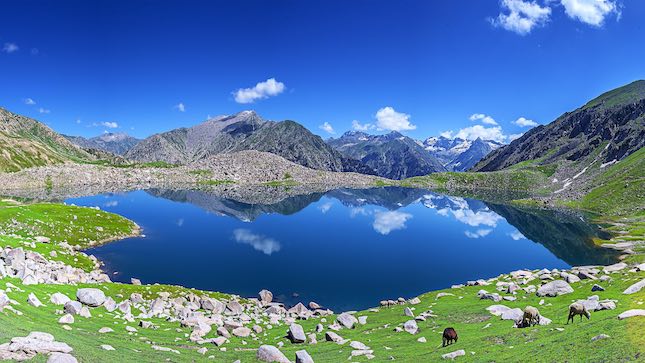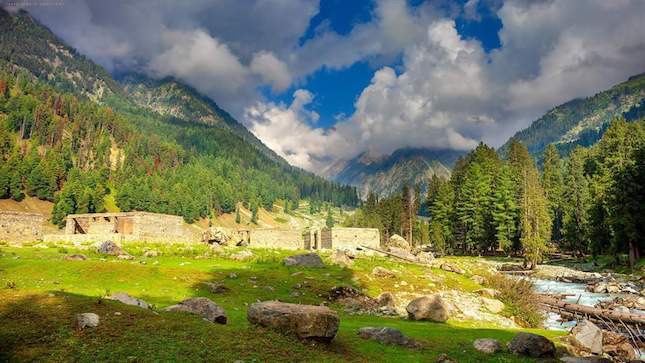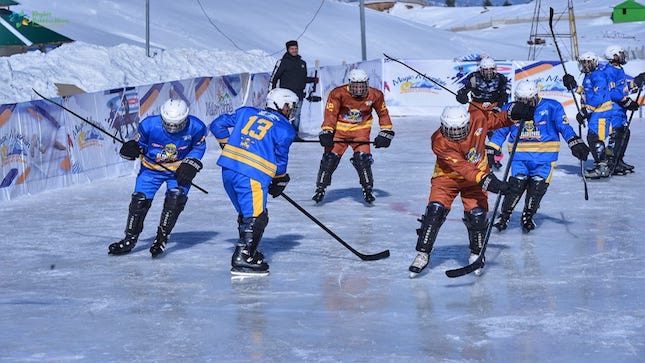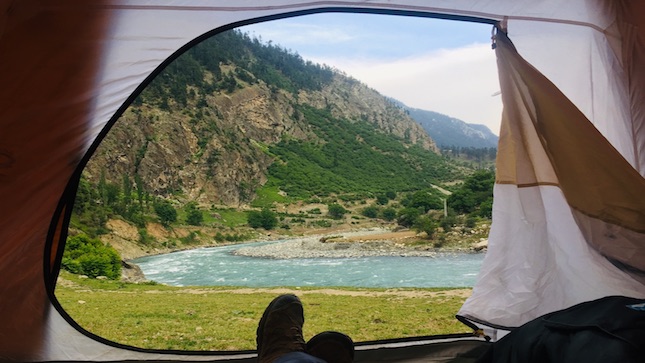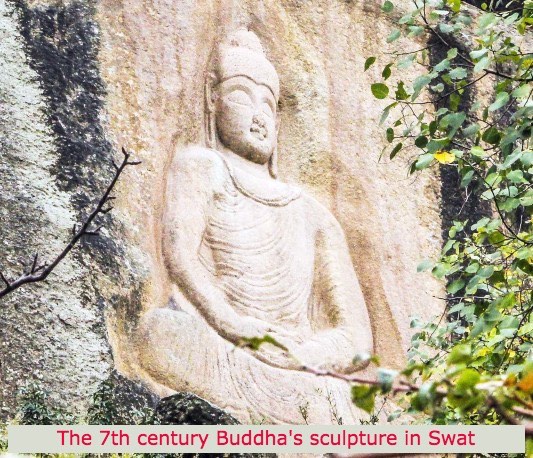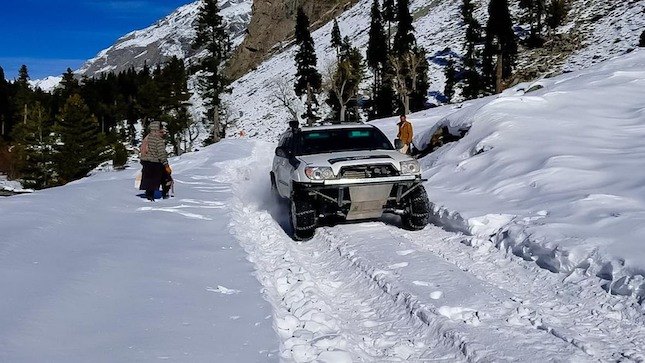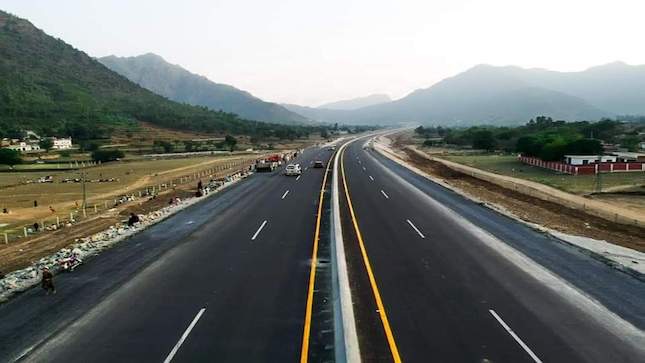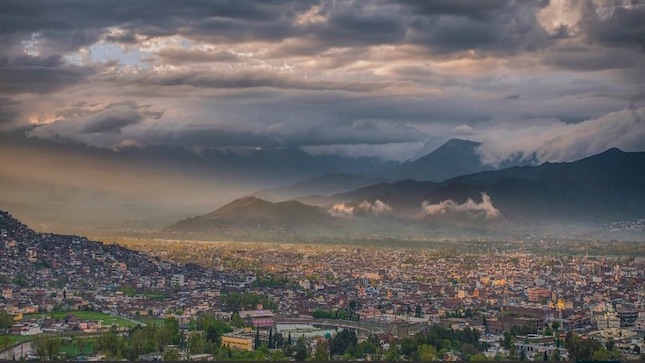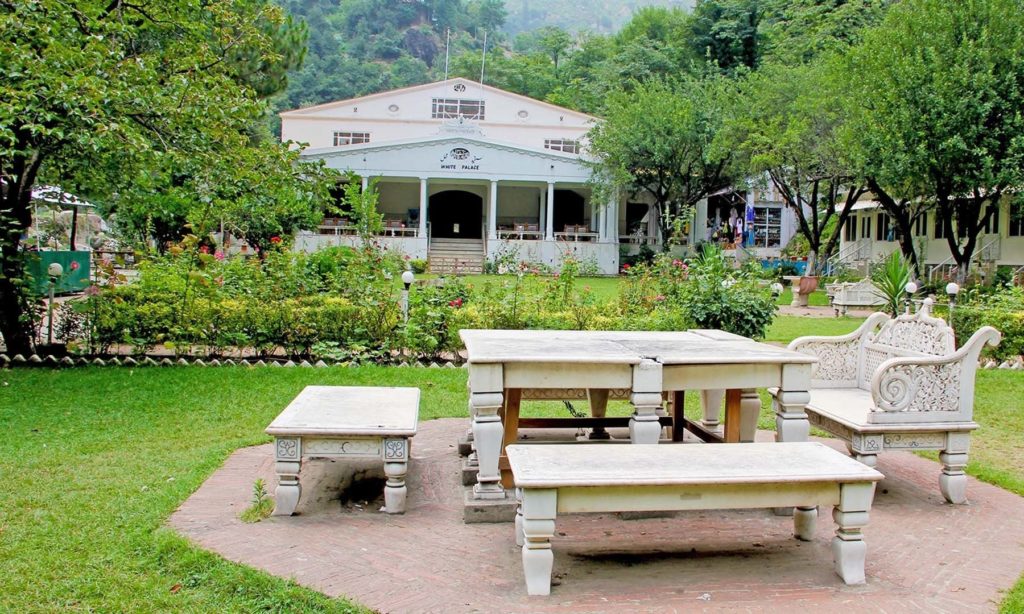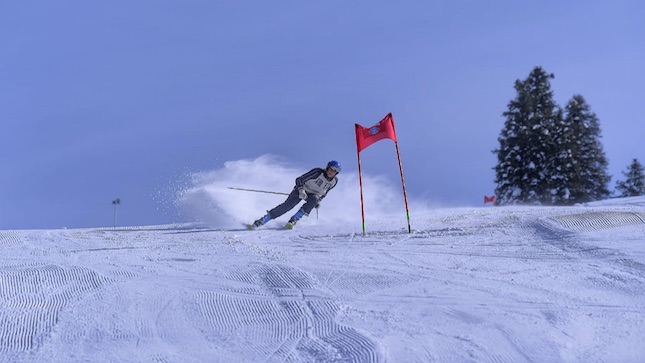Swat is a breathtaking valley nestled in the northern region of the Khyber Pakhtunkhwa Province, Pakistan. Renowned as the ‘Switzerland of the East’ and the ‘Paradise on Earth,’ Swat is cherished for the inspiration drawn from its natural beauty. Encompassing an expansive area of 5,337 square kilometers (2,061 square miles), its captivating allure is located approximately 247 kilometers (153 miles) away from Islamabad.
Table of Contents
- 1 About Swat
- 2 Features of Swat
- 3 Landscape of Swat
- 4 Sports in Swat
- 5 History of Swat
- 6 The State of Swat
- 7 The People of Swat
- 8 The Hospitality of Swat
- 9 The Weather of Swat
- 10 The Best Time to Visit Swat
- 11 Hotels in Swat
- 12 The Cuisine of Swat
- 13 Safety in Swat
- 14 Travel to Swat
- 15 Attractions in Swat
- 16 The Mingora City of Swat
- 17 Saidu Sharif Swat
- 18 The White Palace of Swat
- 19 Madyan Valley, Swat
- 20 Bahrain Valley, Swat
- 21 Kalam Valley, Swat
- 22 Malam Jabba, Swat
- 23 Gabin Jabba, Swat
About Swat
| Official Name: SWAT | Official Status: Swat District |
| Tourism Name: Swat Valley | Ancient Name: Udyana / Oddiyana |
| Location: Khyber Pakhtunkhwa, Pakistan | Coordinates: 35°12′N 72°29′E |
| State Era Name: State of Swat | Alias: The Yousafzai State of Swat |
| Independent Ruling: Until 1969 | Merger with Pakistan: July 1969 |
| Nickname (1): Switzerland of the East | Nickname (2): Paradise on the earth |
| Total Area: 5,337 km2 (2,061 sq mi) | Population: (2017 Census): 2,309,570 |
Features of Swat
Swat is famous for its snow-capped mountains, lush valleys, glaciers, waterfalls, and rivers, creating a breathtaking landscape. The region is often compared to Switzerland for its natural wonders and is known for its perfect outdoor sports like skiing, hiking, and camping. Beyond its scenic beauty, Swat is celebrated for its captivating souvenirs and local treasures. From stunning gemstones and jewelry to handwoven textiles and beautifully carved wooden furniture, the region’s craftsmanship is on display. Visitors can savor delightful treats like fresh fruits, pure honey, traditional sweets, and mouthwatering trout fish, ensuring lasting memories of their trip.
Adding to its allure, Swat’s historical significance shines through ancient archaeological sites and ruins. Influencing Buddhism and the Silk Road trade, it served as a crucial part of the Gandhara civilization. Its unique cultural heritage, including its former independence as “The Yusafzai State of Swat,” intrigues history enthusiasts and curious travelers eager to delve into its fascinating past.
Landscape of Swat
Swat Valley, renowned for its majestic mountains, is nestled among the foothills of the Hindukush range, offering opportunities for hiking, trekking, and meditation. The valley’s elevation rises rapidly from the south, reaching over 6000 meters (19685 feet), and is surrounded by mountain peaks ranging from 4500 meters (14764 feet) to over 6000 meters (19685 feet) above sea level. The region features lush green valleys, snow-covered glaciers, forests, meadows, and plains, making it a diverse and captivating landscape with varying geology.
Swat Valley is graced with several picturesque rivers, including the Swat River, Panjkora River, Gabral River, Ushu River, and Matiltan River. These rivers enhance the region’s natural beauty, provide water for irrigation and local communities, and offer opportunities for recreational activities. Their meandering paths through the valley contribute to the enchanting allure of Swat, making it a captivating destination for tourists and a vital resource for the local inhabitants.
Swat is blessed with beautiful lakes, adding to its scenic beauty and attracting visitors for fishing, hiking, water sports, or simply relaxing in nature’s splendor. With nearly 35 famous lakes, each possessing unique charm and surrounded by breathtaking landscapes, they hold rich historical significance and mythical tales. These freshwater lakes are not only picturesque but also support a diverse range of plants and wildlife, making them a must-visit destination for nature enthusiasts and locals alike.
Swat Valley is characterized by its favorable plan area for both living and agriculture. The region’s rich variety of fruits, such as apples, cherries, apricots, and plums, serves as an enticing attraction for tourists. The opportunity to partake in fruit-picking amidst picturesque orchards and relish the flavors of freshly grown fruits further enhances the allure of Swat as a desirable destination.
Sports in Swat
Swat offers a diverse array of outdoor recreation opportunities, available both in summer and winter. During the summer months, visitors can delight in activities like hiking, camping, cycling, biking, rock climbing, ziplining, horseback riding, swimming, rafting, fishing, and enjoying chairlift and cable car rides. As winter transforms the valley with a blanket of snow, tourists and locals alike revel in various winter sports, including skiing, ice skating, sledding, ice hockey, bandy, snowboarding, speed skating, and curling.
The valley caters to adventurers with plenty of free caravans and campsites, catering to family breaks and outdoor escapades. Wild camping is permitted, offering an opportunity for visitors to immerse themselves in the beauty of remote areas while adhering to principles of environmental respect and safety.
The popularity of hiking is on the rise, as long-distance routes enable tourists to immerse themselves in Swat’s stunning landscapes and wildlife. The region caters to hikers of all levels, offering options for leisurely walks in central areas as well as challenging treks through rugged mountains. Backpacking in Swat combines hiking and camping, providing a more immersive and budget-friendly experience. It enhances physical abilities and provides opportunities to explore forests and conquer mountain climbs, leaving travelers with unforgettable memories and newfound skills.
History of Swat
The history and archaeology of Swat are intertwined with a rich and ancient heritage. Swat was once a significant center of the Gandhara civilization, playing a crucial role in the development of Buddhism and the Silk Road trade. The region’s archaeological sites boast ancient stupas, monasteries, sculptures, and relics, providing valuable insights into its glorious past. Swat’s historical significance is evident in the remnants that showcase its cultural and artistic contributions.
Swat’s archaeological materials provide valuable insights into its cultural relations with neighboring regions and beyond, spanning over 5,000 years of history. Today, historians, archaeologists, and enthusiasts are captivated by Swat’s historical and archaeological wonders, making it a compelling destination for those eager to delve into its intriguing past.
The State of Swat
From 1849 to 1969, Swat retained its affluence and independence as the sovereign state “The Yusafzai State of Swat.” During the British Empire’s rule of the Indian subcontinent from 1858 to 1947, Swat remained free and self-governing. The proud local Yusafzai Pashtuns maintained complete control over Swat. On 14th October 1969, the State of Swat voluntarily merged with Pakistan. This merger happened twenty-two years after Pakistan gained independence from British rule in 1947.
In 1961, Queen Elizabeth II and Prince Philip visited The Yousafzai State of Swat and were hosted by Wali (King) of Swat Miangul Jahanzeb. During her stay, the Queen remarked on the striking resemblance between Swat’s snow-capped mountains and Switzerland’s scenic beauty, leading her to call Swat the “Switzerland of the East.” The royal couple engaged in shooting expeditions, and while the Duke hunted, the Queen explored relics at Swat Museum. She sent Winston Churchill a lighthearted telegram, playfully saying: “Greetings from Malakand”, while also recalling his past experiences there and acknowledging Swat’s unconquered status.
The People of Swat
Swat is predominantly inhabited by the Pashtun ethnic group Yousafzai, tracing their roots to Afghanistan. The Afghan Yusafzai tribe settled here in the 16th century, establishing the Yousafzai State of Swat. The latest census indicates a population of around 2.3 million, with Pashtuns forming 90.28% and Kohistanis 8.67% of the populace.
The mother tongue of Swat today is Pashto, spoken by the majority. Locals understand Urdu and have some proficiency in English for communication with tourists. Persian is less common but may be understood by some. Tourists can comfortably interact using English and Urdu during their visit to Swat.
The Hospitality of Swat
Pashtun culture in Swat is rooted in a rich heritage with distinct customs, including Pashtunwali, the traditional code of conduct. It emphasizes hospitality, justice, bravery, and other virtues governing social and moral behavior.
Tourists visiting Swat are warmly welcomed and treated with great hospitality, a vital part of Pashtunwali. Pashtuns take pride in extending their best to make guests feel comfortable and valued during their stay. In return, tourists are expected to respect local customs and practices, fostering mutual understanding and a positive cultural experience.
The Weather of Swat
The Swat weather is known for its moderate and changeable nature, seldom becoming extremely hot. Despite being a relatively small valley, one of the most surprising aspects of the Swat climate is its significant variation from one region to another. Traveling just 20-30 minutes in any direction can lead to a completely different weather experience, sometimes even witnessing “four seasons in one day.”
During the Spring season in Swat, average maximum temperatures typically range from approximately 7°C (45°F) to 13°C (55°F) in the months of March, April, and May. As summer arrives in June, July, and August, the valley experiences its warmest months, with average maximum temperatures ranging from around 15°C (59°F) to 17°C (63°F).
In Autumn (or Fall), temperatures in Swat are likely to range from approximately 8°C (46°F) to 14°C (57°F) from September to November. Finally, the months of December, January, and February mark the coldest period in Swat, with the average maximum temperature usually hovering around 5°C (41°F).
Swat experiences snowfall during the winter months, typically from December to February. The valley is transformed into a winter wonderland as snow blankets the majestic mountains, lush green valleys, and scenic landscapes. Snowfall in Swat adds to its allure, attracting tourists and locals alike to revel in the beauty of the snow-capped surroundings and enjoy winter sports and activities.
The Best Time to Visit Swat
The best time to visit Swat is during the spring and summer months, which typically span from April to October. During this period, the weather is pleasant, with mild temperatures and blooming landscapes, making it ideal for outdoor activities, sightseeing, and enjoying the natural beauty of the valley. During the spring season, from March to May, visitors are treated to a vibrant spectacle of blooming flowers and lush greenery, while the summer months, spanning from June to August, offer comfortable temperatures that facilitate hiking, trekking, and exploring the various attractions of the valley.
Winter in Swat is ideal for winter sports such as skiing, snowboarding, and snowshoeing. The valley’s snow-covered landscapes and favorable weather conditions during the winter months, from December to February, create the perfect setting for enthusiasts to indulge in these exciting activities. However, this time may not be the best for all travelers, as heavy snowfall can make some areas inaccessible, and outdoor activities like trekking might be limited.
Hotels in Swat
Swat offers a variety of accommodations, including luxurious resorts, comfortable hotels, cozy guesthouses, and budget-friendly options. Many hotels provide picturesque views of the mountains and valleys, along with amenities such as Wi-Fi, hot water, heating, and in-house restaurants serving local and international cuisine. It is recommended to book in advance during peak tourist seasons to secure the best options. Swat’s warm hospitality ensures visitors have a comfortable and memorable stay in the stunning valley.
All famous tourist destinations have reasonable accommodation or hotels in Swat, but it is highly recommended to book in advance, especially when traveling to the far-flung tourist areas. This ensures a hassle-free and enjoyable stay, allowing you to fully immerse yourself in the beauty and charm of Swat without worrying about accommodation availability.
The Cuisine of Swat
Swat offers a diverse array of local traditional food that delights both residents and visitors. The Swat cuisine is a harmonious fusion of Pashtun, Afghan, Persian, and Turkish culinary traditions, resulting in a unique blend of flavors, aromas, and textures. In contrast to the spiciness often found in Pakistani and Indian cuisine, Swat dishes feature a mild heat, showcasing the use of locally grown herbs and delicate spices. The culinary staples include bread, rice, a variety of meats such as lamb, beef, chicken, and freshwater fish, along with an abundance of fresh vegetables, fruits, dairy products like yogurt, whey, and cheeses, as well as honey, assorted nuts, and dried fruits.
When exploring Swat’s culinary offerings, be sure not to miss the mouth-watering Chapli kebab, Kabuli pulao, Tikka kebab, Tikka skewers, and the delectable grilled dishes prepared over charcoal. Additionally, indulge in the unique Dum Pukht style of cooking and savor the exquisite Swat trout fish. Among the local delights, the signature dishes of Chukand or Warjalay stand out, elevating the culinary experience and showcasing the distinct charm of the region’s gastronomy.
Safety in Swat
Swat is indeed a peaceful and secure destination, extending a warm welcome to both domestic and foreign tourists. The people of Swat are renowned for their heartfelt hospitality, embracing visitors from every corner of the world, irrespective of their gender or nationality. Every year, hundreds of thousands of tourists choose Swat as their preferred holiday destination, where they joyfully and securely celebrate their vacations amidst the tranquility and warmth of this picturesque valley.
Moreover, the local government and the community have made significant investments in new tourism projects and have placed the utmost priority on ensuring the safety and security of both residents and visitors. These joint efforts serve to maintain Swat as a safe and delightful haven for all travelers, encouraging them to explore and revel in the captivating landscapes and cultural treasures that the region has to offer.
Travel to Swat
To reach Swat Valley, there are several travel options, each with varying distances and routes:
1. By Air: The domestic Swat Airport, known as Saidu Sharif Airport, is currently closed for flights due to maintenance and refurbishment works. As a result, the closest airports to Swat are either Bacha Khan International Airport in Peshawar or Islamabad International Airport.
2. By Road: Swat is conveniently accessible by road from various cities in Pakistan. The primary route is via the Swat Motorway (M16), popularly known as Swat Expressway, which provides a seamless connection between Islamabad and Peshawar to Mingora, the largest city in Swat.
Travelers coming from Peshawar have an alternative route available through the N45, passing through Nowshera, Mardan, and Batkhela. However, it’s essential to note that the alternative route through the N45 is an older hilly road with steep slopes, which may result in a longer travel time to reach Swat.
Road Distance from Major Cities in Pakistan to Swat
| Swat Distance Summary Table | ||||
| City or Place name | Distance | Travel Time | Transportation | Motorway/ Route |
| Islamabad to Swat | 230 km (143 miles) | 3 hours + | Car/ Public Transport | AH1/M-1 and M-16 |
| Peshawar to Swat | 292 km (120 miles) | 2 hr 50 min | Car/ Public Transport | M-1 and M-16 |
| Lahore to Swat | 564 km (350 miles) | 6 hr 50 min | Car/ Public Transport | M-2, M1, and M-16 |
| Karachi to Swat | 1,598 km (993 miles) | 18 hr 45 min | Car/ Public Transport | M9, N55, M5, M4, M2, M16 |
3. By Car: Traveling to Swat by car is a favored and convenient choice for tourists. The journey provides an opportunity for travelers to relish a scenic drive and make stops along the route to immerse themselves in the region’s breathtaking natural beauty.
4. By Bus: Regular bus services are available from major cities, including Islamabad, Peshawar, Lahore, and Karachi to Mingora and other towns in Swat.
5. By Train: Although there is no direct train service to Swat, travelers can take a train to Peshawar or Rawalpindi/Islamabad and then proceed to Swat by road.
Attractions in Swat
Swat, with its abundant natural beauty and enchanting landscapes, offers a plethora of stunning destinations for travelers to explore. We recommend the following must visit places, tourist attractions, and activities in Swat.
The Mingora City of Swat
Mingora serves as the gateway and arrival point to Swat, bustling with activity day and night. The lively Mingora market continues to buzz until late hours, providing a perfect blend of local culture and tourist experiences. In the heart of the city, both locals and tourists indulge in shopping and dining, making it an enjoyable hub for exploration.
For tourists heading to the more adventurous areas of Swat, Mingora Bazar offers convenience and a chance for last-minute shopping. Thousands of shops line the streets, offering a wide range of merchandise throughout the day. In addition to its vibrant market, Mingora boasts a diverse selection of accommodations, from hotels to restaurants, takeaways, cafes, and western food outlets. Whether you crave local delicacies or fast food, Mingora has something to satisfy every palate.
Saidu Sharif Swat
Saidu Sharif served as the political headquarters and administrative capital of the Swat district. As the capital, Saidu Sharif hosts the district government offices, professional educational institutes, healthcare facilities, and more.
Saidu Sharif offers a variety of tourist attractions, a range of accommodations, and dining options for visitors. These attractions include the Saidu Sharif Stupa, a reminder of the region’s Buddhist past, and the Swat Museum with its fascinating collection of artifacts. The Butkara Stupa showcases the area’s historical architecture, while Jahanzeb College and Wadudia Hall highlight the glorious recent history of the Swat State of Yousafzai. The Saidu Baba Shrine provides a spiritual experience, and Mingora Bazaar, which is a stone’s throw away, offers a vibrant local atmosphere for shopping and tasting traditional food. Exploring these sites allows visitors to immerse themselves in Swat’s rich history and culture.
The White Palace of Swat
The Marghazar White Palace is an iconic historical landmark located in Swat. Situated in the charming Marghazar Valley, approximately 12 km (7.5 miles) from Mingora, it was originally constructed as a summer residence for the Wali (ruler) of Swat in 1940. During the Swat State era, the Marghazar White Palace hosted many important and royal personalities, including Queen Elizabeth II of the UK in 1961, who stayed here as a royal guest. Surrounded by lush green gardens and beautiful landscapes, the palace creates a serene and picturesque setting for its distinguished visitors.
Today, the Marghazar White Palace is open to the public as a tourist attraction. Visitors can explore the beautifully maintained gardens, stroll through the palace’s elegant rooms, and appreciate the historical significance of this regal structure. The palace offers stunning views of the surrounding valley and provides an insight into the royal history of Swat. For travelers interested in history, culture, and architecture, the Marghazar White Palace is a must-visit destination. It stands as a testament to the region’s rich heritage and offers a glimpse into the lifestyle of the Swat rulers in bygone eras.
Madyan Valley, Swat
Madyan is a picturesque hill station and a highly popular tourist destination in the upper northern region of Swat. Located about 51 km (31 miles) to the north of Mingora city, this captivating town offers a tranquil retreat amidst nature’s beauty. At an elevation of 1,320 m (4,330 ft), Madyan Valley stands as a gateway to the enchanting Kalam valley, which lies at a distance of 45 km (27 miles) through the scenic route of Bahrain valley. Positioned as a middle spot between Mingora and Kalam, Madyan serves as an ideal place to take a break while journeying upwards in Swat.
With charming settlements along the banks of the Swat river, Madyan Valley boasts attractive surroundings and hospitable locals. The breathtaking views of this region are enhanced by the lush green mountains, which in winter transform into a magical winter wonderland, completely blanketed with snow, offering a completely different and enchanting experience. Although the downtown area of Madyan may not be as extensive, it still offers sufficient amenities, including shops, restaurants, cafes, hotels, and more, ensuring visitors enjoy a comfortable and fulfilling stay. Year after year, hundreds of thousands of tourists flock to Madyan, drawn by its alluring natural beauty and the pleasure of basking in its delightful weather.
Bahrain Valley, Swat
Bahrain is a captivating town and a renowned tourist destination gracefully situated along the banks of the Swat River. Also known as Bahrain Valley, this charming town is located 59 km (36 miles) north of Mingora. The valley attracts numerous tourists heading towards upper northern Swat destinations like Kalam and Gabral. Bahrain offers various amenities, including shops, restaurants, cafes, and hotels, making it a popular and comfortable stopover for travelers seeking to enjoy its pleasant landscapes and delightful weather.
Bahrain’s special feature is its location where Daral and Swat rivers meet, creating a beautiful spot for meals and drinks. Exploring trout fish hatcheries and savoring dishes adds to the valley’s charm. Nearby villages offer a chance to experience nature, and Bahrain’s proximity to Madyan, Daral & Saidgai lakes makes it a perfect base camp for exploring. Travelers love the town’s picturesque landscapes and convenient amenities for relaxation and an immersive experience in Swat’s captivating beauty.
Kalam Valley, Swat
Kalam, also known as Kalam Valley, is a sub-valley of Swat located at an elevation of about 2,000 meters (6,600 feet) above sea level. It is situated at a distance of 96 km (59 miles) from Mingora city, accessible through route N95 heading north. Kalam is a major tourist destination in Swat, offering plenty of attractions and activities for visitors to enjoy.
The charming downtown of Kalam Valley provides essential amenities along the Swat riverbank. During peak tourist season, it’s advised to book in advance. Nature lovers can relish the valley’s natural wonders, lush green forests, and high-peak mountains. Summer camping by the riverbank is popular, and the annual Kalam Festival draws many tourists. Nearby places like Matiltan, Utror, and Gabral, along with remarkable lakes such as Mahodand, Kundol, and Izmis, add to the allure of this picturesque valley.
Malam Jabba, Swat
Malam Jabba, a picturesque hill station and sought-after tourist destination, is situated 45 km (28 miles) away from Mingora in the northeast of Swat. At an elevation of 2,804 meters (9,199 ft), the famous Malam Jabba ski resort and chairlift rides are among the main attractions of the region. Additionally, the area offers a number of comfortable hotels, a variety of restaurants, and other amenities and services.
During the summer, visitors to Malam Jabba can enjoy a range of activities, including nature walks, camping, local cuisine, chairlift rides, hiking, and immersing in the vibrant summer festival. The picturesque landscapes, cool mountain weather, and friendly locals offer a perfect retreat for nature lovers and adventure seekers in the captivating Swat Valley. During the winter, Malam Jabba offers a paradise for winter sports enthusiasts, with its renowned ski resort attracting visitors from near and far. Tourists can indulge in skiing, snowboarding, and other winter activities on the pristine slopes of the snow-capped mountains. The enchanting winter festival adds to the festive atmosphere, allowing visitors to experience local culture and traditions amidst the breathtaking scenery of Swat.
Gabin Jabba, Swat
Gabin Jabba, an enchanting tourist destination in Swat, is situated approximately 58 km (36 miles) north of Mingora. The name “Gabin Jabba” originates from Pashto, meaning “Honey Marshes” in English. Perched at an elevation of 2582m (8471ft) above sea level, this captivating spot lures tourists with its picturesque green meadows, dense forests, snow-capped mountains, mineral springs, and towering peaks, providing an immersive experience amidst nature’s splendor.
Gabin Jabba, known as the “garden of medicinal plants,” captivates visitors with its natural beauty and pleasant summer climate. Tourists are drawn to the locally grown products, the freshwater trout fish farm, and the area’s wild honey, all offering delightful tastes and health benefits. While there are no traditional hotels available, the charming Camping Pod in Swat Gabin Jabba is an eco-friendly option. Gabin Jabba also provides a secure camping environment for self-camping.

